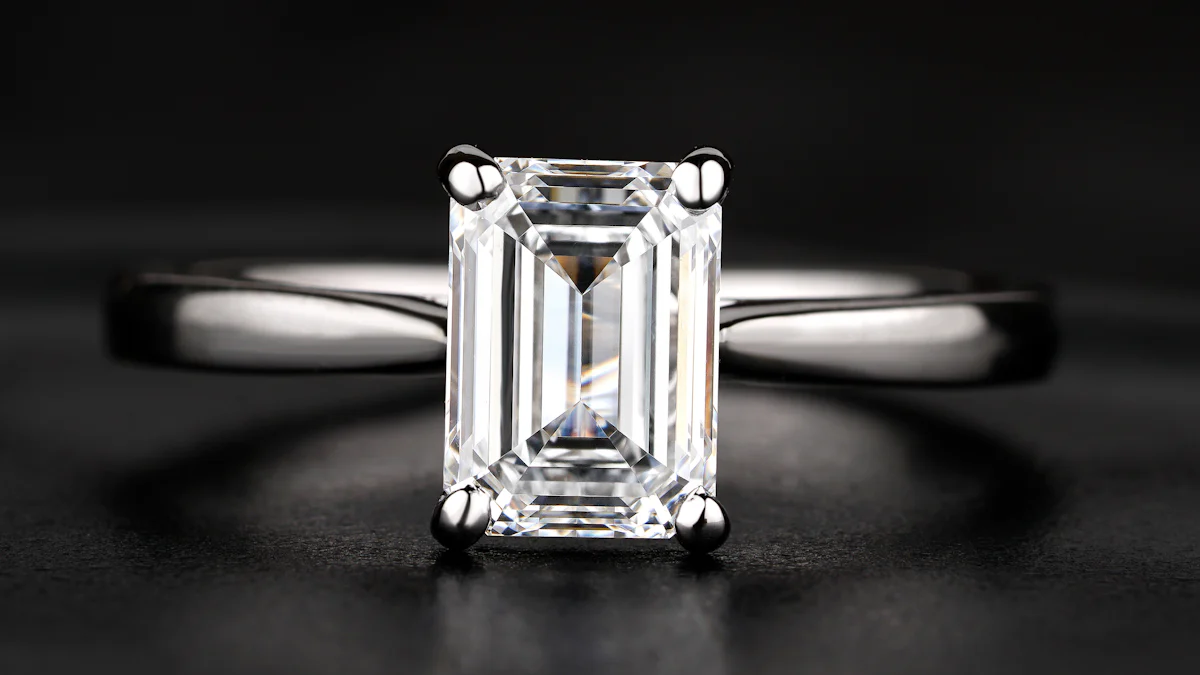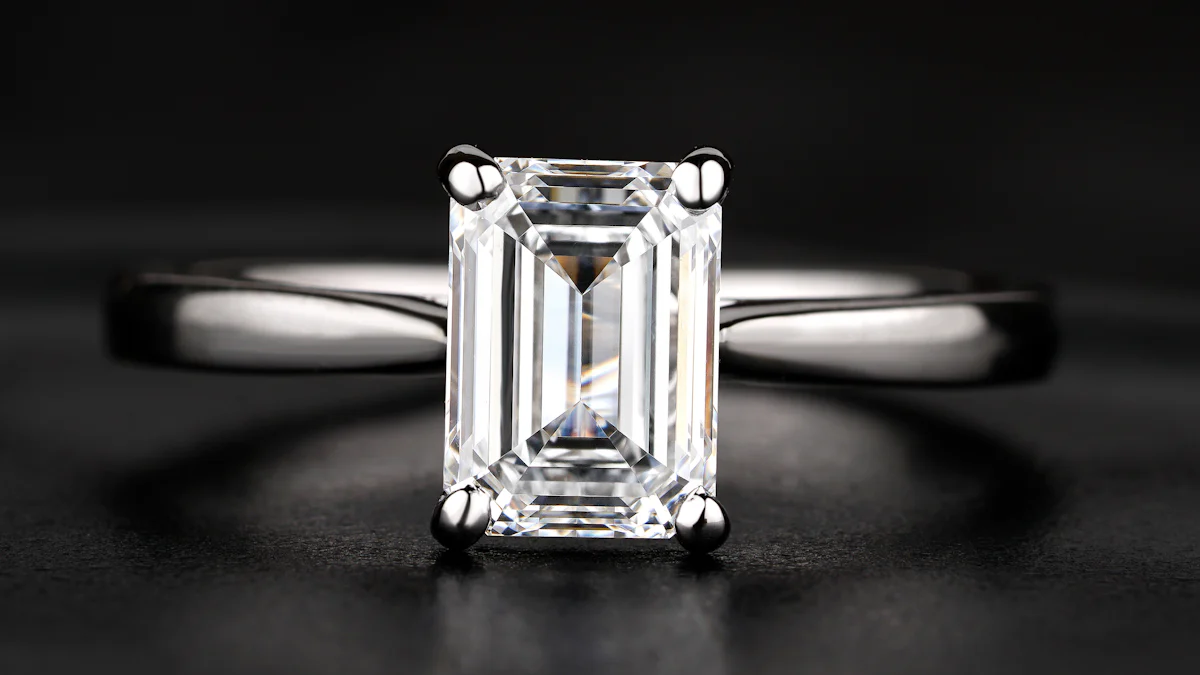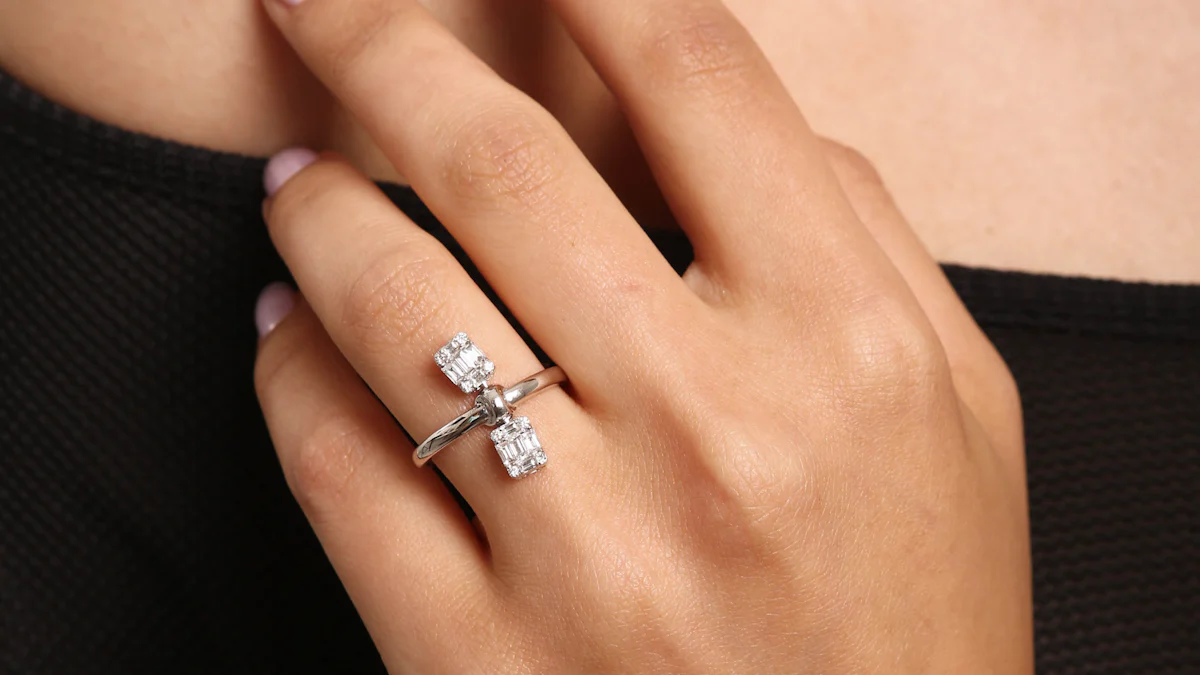Comparing 1 Carat Diamond Rings from Top Brands

A 1 carat diamond ring holds a special place in the world of fine jewelry. It’s not just about size; it’s about achieving the perfect balance of sparkle, elegance, and significance. This size has become a benchmark for engagement rings, symbolizing love and commitment while offering a striking visual impact. Choosing the right one means looking beyond the stone itself. You’ll want to consider quality, design, and price. Brand reputation also plays a big role, as top brands often provide unique features and exceptional craftsmanship that elevate the experience.
Key Takeaways
- Understand the 4 Cs—cut, clarity, color, and carat weight—when choosing a diamond, as they significantly impact its beauty and value.
- Prioritize cut quality over carat weight; a well-cut diamond will sparkle more and appear larger than a poorly cut one of the same weight.
- Consider alternative options like lab-grown diamonds, which can be 50% to 70% less expensive than natural diamonds while offering similar quality.
- Explore various diamond shapes and settings to find a design that reflects your personal style and enhances the diamond's beauty.
- Research brand reputation and customer service; reputable brands provide better quality assurance and support throughout your purchase.
- Set a budget and balance quality with affordability by focusing on diamonds with slight inclusions or near-colorless grades for better value.
- Take your time to compare prices and options across different retailers to ensure you find the best deal without compromising on quality.
Understanding the Appeal of a 1 Carat Diamond Ring
What is a 1 Carat Diamond?
A 1 carat diamond is more than just a measurement; it’s a standard that defines the weight of the diamond. One carat equals 200 milligrams or 0.007 ounces. While the weight remains constant, the diamond’s appearance can vary based on its shape and cut quality. For example, a round brilliant cut may look smaller than an oval or marquise cut of the same weight due to how the weight is distributed. This makes understanding carat weight essential when choosing a diamond.
You might think a larger carat weight always means a bigger-looking diamond, but that’s not always true. The cut plays a significant role in how the diamond reflects light and appears to the eye. A well-cut 1 carat diamond can outshine a poorly cut diamond of a higher carat weight. Knowing this helps you focus on brilliance and beauty rather than just size.
Why 1 Carat is a Popular Choice for Engagement Rings
A 1 carat diamond ring strikes the perfect balance between size and affordability. It’s large enough to make a statement yet small enough to fit within many budgets. This size has become a favorite for engagement rings because it symbolizes elegance without being overly extravagant. For many couples, it represents a meaningful investment that doesn’t compromise on quality or style.
The popularity of 1 carat diamonds also stems from their versatility. You can find them in various shapes, from classic round cuts to modern pear or cushion cuts. This flexibility allows you to choose a design that matches your personal taste. Additionally, many jewelers offer customization options, letting you pair the diamond with a setting that enhances its beauty.
Another reason for their appeal is the emotional value they carry. A 1 carat diamond ring often becomes a timeless piece, cherished for years as a symbol of love and commitment. Its size makes it noticeable but not overwhelming, striking a perfect balance that resonates with many buyers.
Comparing Quality: Cut, Clarity, and Color in 1 Carat Diamond Rings

The Importance of Cut in Enhancing Brilliance
The cut of a diamond determines how well it reflects light, which directly impacts its sparkle and brilliance. When you choose a 1 carat diamond ring, the cut quality should be your top priority. A well-cut diamond maximizes light reflection, creating that dazzling sparkle everyone loves. On the other hand, a poorly cut diamond can appear dull, even if it has excellent clarity and color.
Diamond cuts are graded from Excellent to Poor. An Excellent or Very Good cut ensures the diamond looks vibrant and full of life. The proportions of the cut also affect how large the diamond appears. For example, a well-proportioned 1 carat diamond can look bigger than one with a shallow or deep cut. If you want your diamond to truly shine, focus on finding the best cut grade within your budget.
Clarity Grades and Their Impact on Appearance
Clarity refers to the presence of imperfections, known as inclusions (inside the diamond) and blemishes (on the surface). These flaws can affect how light passes through the diamond, impacting its overall appearance. However, many inclusions are so small that they’re invisible to the naked eye, especially in a 1 carat diamond ring.
Clarity grades range from Flawless (FL) to Included (I). While Flawless diamonds are rare and expensive, you don’t need perfection to get a stunning ring. Grades like Very Slightly Included (VS1 or VS2) or Slightly Included (SI1) often strike a good balance between quality and affordability. These diamonds look clean to the naked eye and cost less than higher-graded stones.
When evaluating clarity, consider how visible the inclusions are and where they’re located. Inclusions near the edges are less noticeable and can be hidden by the ring setting. This allows you to prioritize other factors, like cut or color, without compromising the beauty of your diamond.
How Color Grading Affects the Diamond’s Visual Appeal
Color grading measures how much color is present in a diamond. The scale ranges from D (completely colorless) to Z (noticeable yellow or brown tint). In a 1 carat diamond ring, even a slight difference in color can impact its visual appeal and value.
Colorless diamonds (grades D-F) are the most sought after because they allow maximum light reflection, enhancing the diamond’s brilliance. Near-colorless grades (G-J) offer a more affordable option while still appearing white to most people. Beyond J, the diamond may show a noticeable tint, which could affect its sparkle.
The ring’s setting can also influence how the diamond’s color appears. For instance, a yellow gold setting can make a slightly tinted diamond look whiter, while a platinum or white gold setting highlights the stone’s true color. By considering the setting and color grade together, you can achieve a harmonious look without overspending.
Exploring Visual Differences in 1 Carat Diamond Rings

Popular Diamond Shapes and Their Unique Characteristics
When it comes to choosing a diamond shape, the options can feel endless. Each shape offers its own charm and personality, allowing you to find one that truly resonates with your style. For a 1 carat diamond ring, the shape you select can significantly influence its overall appearance and how it catches the light.
- Round Brilliant Cut: This is the classic choice for a reason. Known for its unmatched sparkle, the round brilliant cut maximizes light reflection, giving the diamond a dazzling brilliance. If you want a timeless look with maximum shine, this shape is hard to beat.
- Emerald Cut: The emerald cut stands out with its rectangular facets and elegant "hall of mirrors" effect. Its elongated shape creates a sophisticated and unique look. A 1 carat emerald cut diamond typically measures around 6.0mm x 4.0mm, making it appear larger on the finger compared to some other shapes.
- Oval, Pear, and Marquise Cuts: These fancy shapes offer a modern twist. Their elongated designs can make the diamond look bigger than its actual carat weight. The pear and marquise cuts, in particular, add a touch of drama and individuality to your ring.
- Asscher Cut: Similar to the emerald cut but more square in shape, the Asscher cut features step-cut facets that give it a vintage, art-deco vibe. Its dimensions, around 5.5mm x 5.5mm for a 1 carat diamond, create a balanced and symmetrical appearance.
Each shape has its own way of reflecting light and enhancing the diamond’s beauty. Whether you prefer the classic sparkle of a round cut or the refined elegance of an emerald cut, the shape you choose will define the ring’s personality.
Ring Settings and Design Options from Top Brands
The setting of your diamond ring plays a crucial role in its overall look and feel. Top brands offer a variety of settings that not only secure the diamond but also enhance its beauty. Here are some popular options to consider:
- Prong Setting: This classic design uses small metal claws to hold the diamond in place. It allows maximum light to pass through the diamond, enhancing its brilliance. Prong settings work beautifully with round brilliant cuts and other shapes that prioritize sparkle.
- Halo Setting: A halo of smaller diamonds surrounds the center stone, creating the illusion of a larger diamond. This setting adds extra sparkle and works well with shapes like oval, pear, or cushion cuts.
- Bezel Setting: For a modern and sleek look, the bezel setting encases the diamond in a thin metal rim. It offers excellent protection for the stone while maintaining a minimalist aesthetic.
- Three-Stone Setting: This design features a center diamond flanked by two smaller stones. It symbolizes the past, present, and future, making it a meaningful choice for engagement rings. Emerald and Asscher cuts look particularly stunning in this setting.
- Pavé Setting: Tiny diamonds are set closely together along the band, creating a continuous sparkle. This setting pairs well with any diamond shape and adds a touch of glamour to the ring.
Top brands often provide customization options, allowing you to mix and match settings with your preferred diamond shape. You can also choose from different metals like platinum, white gold, or yellow gold to complement the diamond’s color and your personal style. By exploring these options, you can create a ring that feels uniquely yours.
Price Variations in 1 Carat Diamond Rings
Factors That Influence the Cost of a 1 Carat Diamond Ring
The price of a 1 carat diamond ring can vary widely, and understanding the factors behind these variations helps you make a smarter purchase. The 4 Cs—cut, color, clarity, and carat weight—play the most significant role in determining the cost. Among these, the cut often has the greatest impact on price. A diamond with an ideal or excellent cut grade reflects light beautifully, making it more expensive than one with a lower cut grade.
Color grading also affects the price. Diamonds graded as colorless (D-F) are more valuable because they allow maximum brilliance. Near-colorless diamonds (G-J) offer a more affordable option while still appearing white to most people. Clarity is another key factor. Flawless diamonds command premium prices, but diamonds with slight inclusions (VS1, VS2, or SI1) can look just as stunning to the naked eye and cost significantly less.
The shape of the diamond also influences its price. Round brilliant cuts are the most expensive due to their popularity and the amount of rough diamond lost during cutting. Fancy shapes like oval, pear, or emerald cuts often cost less while offering unique visual appeal. Additionally, lab-grown diamonds have emerged as a budget-friendly alternative, costing 50% to 70% less than natural diamonds of similar quality.
Other factors include the brand and craftsmanship. Rings from top brands often come with a higher price tag due to their reputation, design exclusivity, and customer service. Customization options, such as unique settings or engraving, can also add to the overall cost. By understanding these factors, you can prioritize what matters most to you and find a ring that fits your budget.
Comparing Price Ranges Across Leading Brands
When shopping for a 1 carat diamond ring, you’ll notice significant price differences across brands. These variations stem from differences in diamond quality, design, and additional services. On average, prices for a 1 carat diamond range from $2,000 to $16,000, depending on the 4 Cs. High-end brands like Tiffany & Co. or Cartier often charge a premium, with prices starting around $10,000 and going well beyond $20,000 for exceptional pieces.
Mid-range brands like Ritani or James Allen offer a balance between quality and affordability. At Ritani, for example, a 1 carat diamond ring typically costs between $5,000 and $15,000. These brands often provide detailed certifications and customization options, ensuring you get value for your money. Online retailers like Blue Nile or Brilliant Earth also offer competitive pricing, with some 1 carat diamonds starting as low as $2,000 for lower grades and reaching $12,000 for higher-quality stones.
Lab-grown diamonds present another cost-effective option. These diamonds, identical to natural ones in appearance and structure, can cost 50% to 70% less. For instance, a lab-grown 1 carat diamond might range from $1,000 to $6,000, depending on its quality and the retailer.
To make the best choice, compare prices across multiple brands and retailers. Look for certifications like GIA or AGS to ensure the diamond’s quality matches its price. By exploring different options, you can find a ring that aligns with your preferences and budget without compromising on beauty or craftsmanship.
Tips for Choosing the Best 1 Carat Diamond Ring
Balancing Quality and Budget
Finding the perfect 1 carat diamond ring doesn’t mean you have to break the bank. The key lies in understanding how to balance quality with your budget. Instead of focusing solely on carat weight, consider the other factors that influence a diamond’s beauty and value. The 4 Cs—cut, clarity, color, and carat weight—play a significant role in determining the overall appearance of the diamond. Among these, cut has the most impact on sparkle and brilliance. A smaller, well-cut diamond often looks more stunning than a larger one with poor proportions.
You don’t need to aim for perfection in every category. For instance, diamonds with slight inclusions (graded VS1 or VS2) appear flawless to the naked eye but cost significantly less than higher-graded stones. Similarly, near-colorless diamonds (grades G-J) offer excellent value while still looking bright and white in most settings. By prioritizing cut and compromising slightly on clarity or color, you can maximize the beauty of your diamond without overspending.
Another way to stay within budget is to explore alternative options like lab-grown diamonds. These diamonds are chemically identical to natural ones but cost 50% to 70% less. They allow you to get a high-quality 1 carat diamond ring at a fraction of the price. Additionally, choosing a less popular diamond shape, such as an oval or pear cut, can save you money while giving your ring a unique and stylish look.
“Understanding facts about diamond sizes and quality can help consumers make more educated choices when purchasing diamonds,” says an industry expert from Diamondrensu. By focusing on what truly matters—brilliance, beauty, and craftsmanship—you can find a ring that fits both your preferences and your budget.
Evaluating Brand Reputation and Customer Service
When investing in a 1 carat diamond ring, the brand you choose matters. Reputable brands often provide better quality assurance, detailed certifications, and exceptional customer service. These factors ensure you’re getting a diamond that matches its description and value. Look for brands that offer transparency about the diamond’s origin and grading. Certifications from trusted organizations like GIA or AGS add credibility and help you feel confident in your purchase.
Customer service is another critical aspect to consider. A good jeweler will guide you through the buying process, answer your questions, and help you make informed decisions. Many top brands also offer perks like lifetime warranties, free resizing, or cleaning services. These extras can enhance your overall experience and provide peace of mind.
Online retailers like Blue Nile and James Allen have gained popularity for their competitive pricing and extensive selection. They often provide high-resolution images or videos of the diamonds, allowing you to inspect them closely before buying. However, if you prefer a more personal touch, visiting a local jeweler can be a great option. Local stores often offer customization services and the chance to see the diamond in person.
Take time to read reviews and compare options. A brand’s reputation reflects its commitment to quality and customer satisfaction. By choosing a trusted jeweler, you ensure your 1 carat diamond ring becomes a cherished piece that lasts a lifetime.
Choosing the perfect 1 carat diamond ring requires careful consideration of quality, appearance, and price. By understanding the importance of cut, clarity, and color, you can make a choice that balances beauty and value. Focus on what matters most to you—whether it’s brilliance, size, or design—and compare options across trusted brands. Take your time to explore both online and in-store retailers. Prioritize your preferences and budget, and don’t hesitate to ask questions. Visit reputable jewelers or read online reviews to ensure your final decision reflects your style and commitment.
See Also
Evaluating Diamond Rings From Leading Gold Band Brands
Assessing 18K Gold Diamond Necklaces By Major Brands
A Review of Leading Brands for White Diamond Rings

